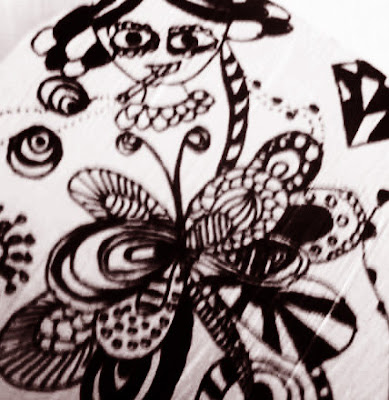Lets just think of why history? History serves many factions at once. You just have to figure out is to what you seek from it.
It makes us reason, wonder about the immensity, richness, it trains our mind in terms of evidence and logic. Imagine if you did not remember anything about your life. Would you not wonder is to how exactly you got here?
We live in a world full of images, at some point in our human history, probably about 30000 years ago; we began to create pictures and figurines.. Archeologist call this period the "creative explosion." But why did people suddenly decide to start creating images of the world around them? He created images about what he wondered, simply about things he did not always understand. Then man created society..culture and everything was dominated by it- even the arts. Today we have the arts of those people for us to understand how it all began..
If you want to cherish art, you just have to look and observe. It is not always necessary for you to try to figure out and understand what the artist is trying to say. All you have to do is watch. If the painting is to your taste you will enjoy this watching, and you can continue to watch as long as your interest holds out, as long as you enjoy the experience of watching this painting. If the painting evokes only repulsion/ dislike, even then stay and watch and try to identify what it is that is evoking the repulsion /dislike. The painting or a sculpture is an invitation for you to meet yourself, to take a journey into yourself - of self-understanding. As you enjoy the experience of this self-awareness, you are well on your way to appreciating art.
But then as you may begin to see deeper, fine artists have to be trained both in the techniques of their mediums and in art history and their audiences must have some knowledge of art history as well.
For example
Queen Maya’s dream,
Railing medallion from the bharut stupa
Shunga, 2nd century BCE, red sandstone.
Twenty-five hundred years ago, nestled in a fertile valley along the border between India and Nepal, a child was born who was to become the Buddha. The stories say that before his birth, his mother, the queen of a small Indian kingdom, had a dream.
A beautiful white elephant offered the queen a lotus flower, and then, entered the side of her body. When sages were asked to interpret the dream, they predicted the queen would give birth to a son destined to become either a great ruler or a holy man. One day, they said, he would either conquer the world, or become an enlightened being—the Buddha. We cannot appreciate the carving if we do not know what visual knowledge existed before the artist’s time that made this medallion also if we did not know anything about Buddha and his mother dreaming about her son’s birth.
We could not know that Michelangelo’s sculpture represents David if we were unaware of that. Within the historical tradition of fine art an adolescent male carrying a sling represents this biblical hero. We therefore not only need to know something about the history of artistic styles, but also about historical meanings or symbols. With knowledge of traditional visual symbols, we can easily interpret images that would otherwise entirely elude us. Fine artist take it for granted that their audience is familiar with these symbols. To deny history is to alienate us from our own roots, community, culture, and species.
















.jpg)




























.jpg)
.jpg)







